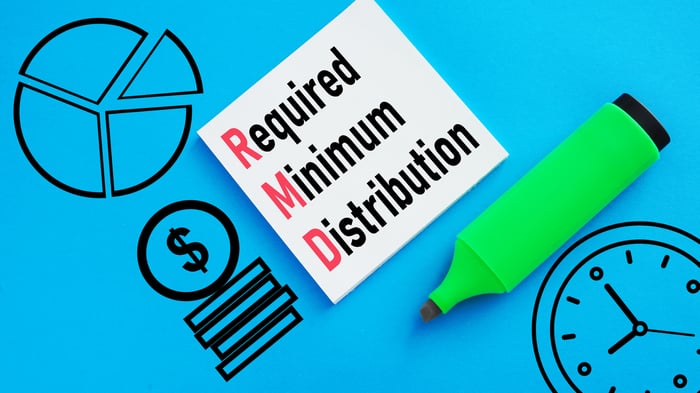You’re probably aware of required minimum distributions (RMDs) if you’re retired or nearing retirement. But did you know that RMDs were first mandated in 1974, the same year individual retirement accounts (IRAs) were introduced as a savings vehicle for Americans without pensions?
Given that Americans would spend decades making tax-deferred contributions to their retirement accounts, the government knew it would eventually need a way to collect taxes on the money — and that’s where RMDs come in.
Where to invest $1,000 right now? Our analyst team just revealed what they believe are the 10 best stocks to buy right now. Learn More »
Owners of tax-deferred retirement accounts must begin making withdrawals at age 73 or 75 (depending on the year they were born) and pay taxes the same year withdrawals are made. RMDs are mandatory until you deplete your retirement account, and failure to take an RMD can result in a 25% penalty.
But what if you don’t need the money?
If you don’t happen to need the money when an RMD is due, it makes sense to get strategic and find beneficial ways to use the funds. Here are five straightforward strategies to get you started.

Image source: Getty Images.
1. Tuck it away for a rainy day
Even if you don’t need the funds to pay everyday expenses, you’ve lived long enough to know that emergencies are inevitable. Whether that emergency is a flooded basement or a ski accident in Vermont, how nice would it be to know you have the cash to cover the issue?
2. Reinvest
The fact that you must take RMDs doesn’t mean you can’t reinvest the funds. If you don’t need the money immediately, allow it to continue to grow by putting it in a taxable brokerage account, high-interest savings account, or an annuity.
3. Dedicate it to medical care
Even if you’re healthy every day for the rest of your life, you’re going to have medical expenses. If nothing else, you’ll probably be paying Medicare premiums. If you don’t need your RMDs, put the money in an easy-to-access account to cover premiums, prescriptions, exercise equipment, or anything else that allows you to live your best life.
4. Pay down debt
If you’re carrying debt, the funds withdrawn from an RMD are a great way to rid yourself of that burden. Let’s say you have a $5,000 balance on a credit card with an APR of 20%. Paying it off is like earning 20% on the $5,000.
5. Lower a mortgage payment
If you’re still paying a mortgage and wish the payment were lower, you can use the money from an RMD to recast the loan. If you’re unfamiliar with how recasting works, here it is in a nutshell:
- You make a lump-sum payment toward your mortgage principal. Typically, borrowers put at least $10,000 toward principal reduction.
- You pay a small fee, ranging from $250 to $500.
- The lender recalculates your monthly payment based on the lower balance. Unlike refinancing your home, you retain your current interest rate. For example, if your mortgage currently carries an interest rate of 5.25%, your recast mortgage will have the same rate.
Recasting works best for conventional loans. Government loans — like FHA, USDA, and VA loans — cannot be recast. You’ll find that most lenders won’t recast jumbo loans either. Finally, some lenders don’t allow recasting at all, so it pays to speak with your mortgage company. Still, recasting is worth a closer examination if you have a conventional loan and are concerned that interest rates won’t ever drop low enough to justify refinancing the mortgage.
If you must take an RMD but don’t need the money, you’re incredibly fortunate. However, not needing it today doesn’t mean you’ll never have use for the funds. The strategic move is to consider situations that could occur and use the money to cover those bases.
The $22,924 Social Security bonus most retirees completely overlook
If you’re like most Americans, you’re a few years (or more) behind on your retirement savings. But a handful of little-known “Social Security secrets” could help ensure a boost in your retirement income.
One easy trick could pay you as much as $22,924 more… each year! Once you learn how to maximize your Social Security benefits, we think you could retire confidently with the peace of mind we’re all after. Join Stock Advisor to learn more about these strategies.
View the “Social Security secrets” »
The Motley Fool has a disclosure policy.







